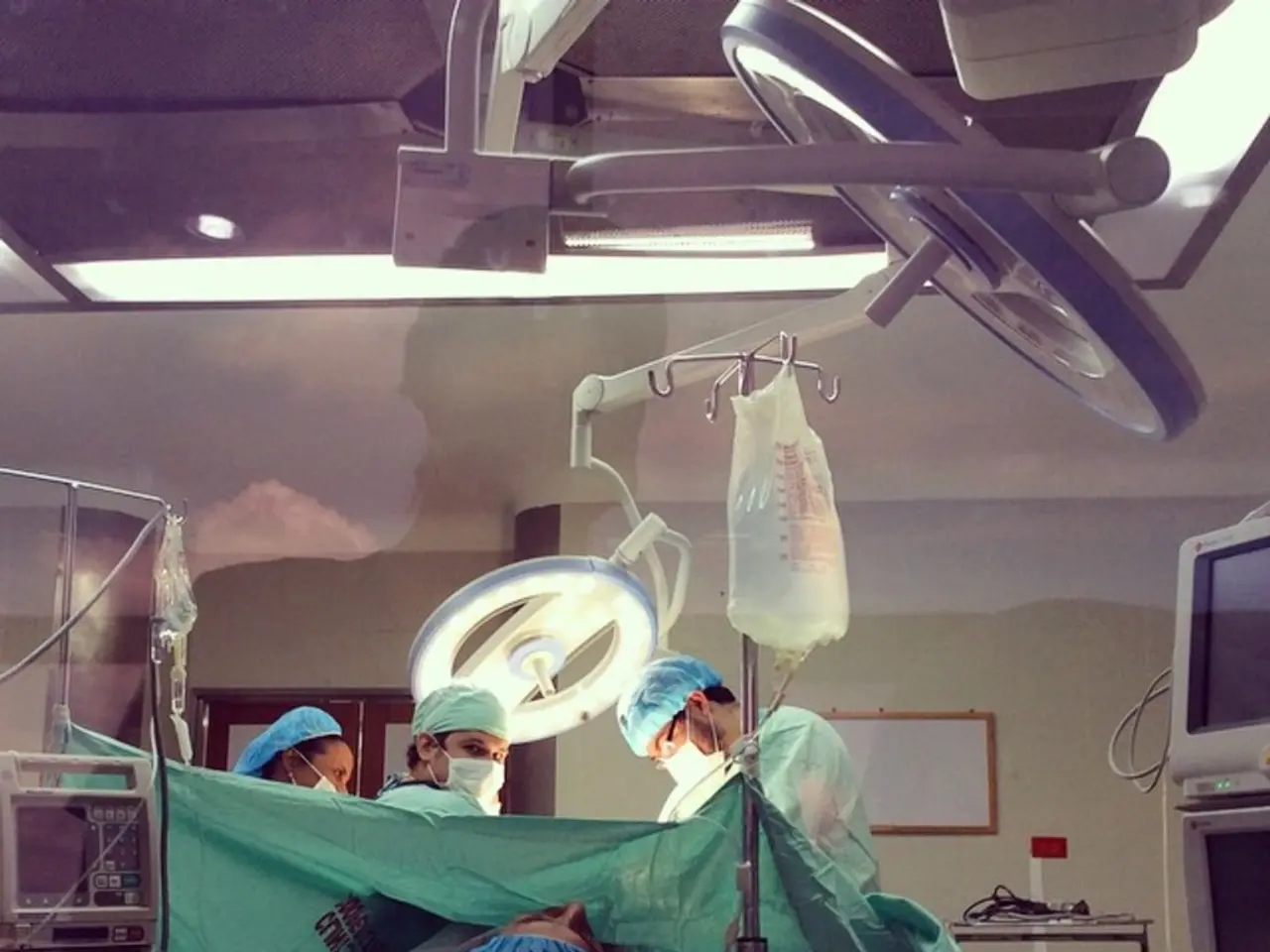Exploring the Present and Emerging Influence of Surgical Procedures Performed through a Singular Access Point
In the realm of surgical technology, a new contender has emerged: single-port (SP) robotic surgery. This innovative approach, which uses a single entry into the patient, offers numerous benefits and challenges, making it an exciting addition to the surgical armamentarium.
The SP system's smaller instruments, coupled with improved optics, enhance the precision of the system for complex surgeries in confined spaces. This makes it particularly useful in procedures where minimal invasiveness and limited anatomical space are crucial. For instance, it has shown promise in simple prostatectomies using the transvesical route.
Compared to multi-port systems, single-port systems offer advantages in cosmesis (smaller scars), reduced pain, and shorter hospital stays due to fewer incisions. They also provide a smaller physical footprint and greater efficiency in confined spaces. On the other hand, multi-port systems have a proven track record with extensive clinical history and tend to offer greater instrument strength, range of motion, and mobility, which can be advantageous in complex surgeries.
However, there is a learning curve for surgeons adapting to the SP system. The instruments branch out from a single trocar and require different hand placement on the controls. Structured training and gradual skill acquisition are recommended to ensure safety and proficiency. Less experienced surgeons may need to master the multi-port system before moving on to the SP system.
For high-volume surgical centers, the SP robotic surgery system is a promising technology worth considering. Institutions should allow time to assess and identify the full capabilities of the SP robotic surgery system. They should also consider the clinical indications and patient populations they serve, the available surgeon expertise and training resources, cost-effectiveness and sustainability considerations, and the importance of establishing structured training programs with mastery progression and proctoring.
SP robotic surgery has been found to improve cosmetic outcomes, patient satisfaction, post-surgical pain, and recovery. Patients may experience reduced scarring, less pain, less need for narcotics, quicker discharge, and faster recovery with the SP system. The use case for SP robotic surgery is constantly evolving, and it has potential applications in ear, nose, and throat procedures.
Recently, a developed access kit for the SP system has made it easier to assess cancer margins, potentially opening the door to procedures that are beyond the capability of multi-port systems. Training and simulation are essential for expert robotic surgeons to get up to speed on the SP system quickly.
In summary, single-port robotic surgery excels in minimizing invasiveness and improving patient recovery but has technical and learning limitations. Institutions should align system choice with their surgical goals, expertise, and patient needs. As the technology continues to evolve, we can expect to see more advancements in this exciting field.
[1] Institution of Robotic Surgery Training (IRST) guidelines for single-port surgery. [2] Comparative study of laparoendoscopic single-site vs. multiport approaches. [3] Clinical outcomes of single-port surgery: a systematic review. [4] Single-port surgery: a review of current evidence and future directions.
- The precision of single-port robotic surgery, particularly in complex medical-conditions requiring surgery in confined spaces, is enhanced by its smaller instruments and improved optics that are beneficial for procedures like simple prostatectomies.
- The use of technology in single-port robotic surgery, such as SP systems, not only offers advantages in health-and-wellness, including cosmetic outcomes, reduced pain, and quicker recovery, but also has promising potential for applying in ear, nose, and throat procedures, thanks to recent advancements and developments in medical-conditions assessment.




